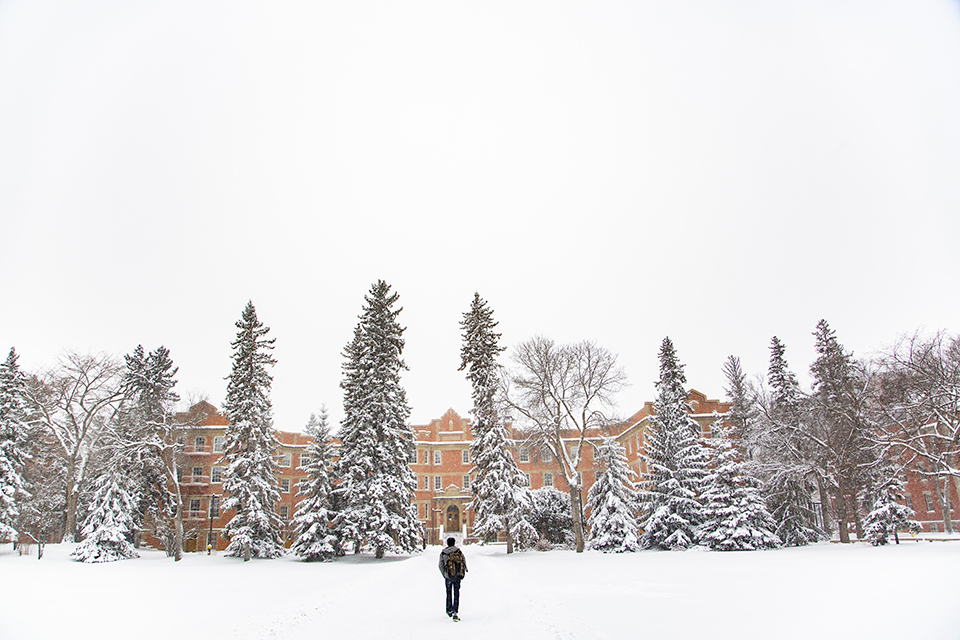How to Dress for Canadian Winters

Winters in Canada often bring a dramatic temperature drop and require you to stay inside or bundle up! The best way to enjoy the winter is to dress appropriately and enjoy the full winter season. If you've noticed that Canadians bundle up quite well and they seem to stay warm, but you have yet to understand how they do it, then this article is for you!
Layers
The key to staying warm in Canada is to wear layers of clothing. The base layer includes the first things you put on before the clothes you plan to wear for the day. One example of a base layer is known as thermal underwear. It's a thin layer that covers your legs, made of a lightweight, breathable material such as fleece, wool or cashmere, and it fits tight to your body.
The beauty of these materials is that they pull the moisture away from your skin to keep you dry and warm - perfect for when you are outside waiting at a bus stop.
Pro Tip: Don't use cotton as your base layer because once you get the cotton wet, it won't dry, and in fact, it will just make you feel damp and even colder. Stick to fleece or wool base layers, which can cost anywhere between $30 - $70. It is seriously worth the money; you can wear these every winter you stay in Edmonton. You will be warm and thankful you invested in an appropriate base layer.
Frostbite
When outside, you need to cover all of your exposed skin-especially if you plan to spend an extended period outside, such as at an outdoor festival. Frostbite is a serious health condition; it is the result of exposing skin to extreme cold. The colder it is outside, the shorter the safe amount of time you can be out with exposed skin.
The first symptoms of frostbite start when the skin becomes red and swollen, followed by a stinging or burning sensation. Most Canadians have experienced the burning sensation, usually when we forget our gloves or winter hats (toques). But this is a form of minor frostbite (also known as frostnip), so the blood will eventually circulate back into those exposed areas, and the burning sensation can go away after an hour. The best way to prevent frostbite is to cover up! Wear gloves on your hands, a tuque on your head and a scarf wrapped around your neck. Your scarf can protect your nose, cheeks and mouth in extreme conditions.
Invest
Invest in a good pair of winter boots. When temperatures drop, it's about being warm -- not fashionable. Forget the latest trends, and invest in a good pair of winter boots with deep treads to help you grip the ice and snow. Most winter boots list up to what degree of temperature you can stay warm outside. Keep an eye out for those that keep you warm down to -20. The average cost of winter boots ranges in-between $80 - $180. You will be thankful your toes are warm and cozy when you are outside in frigid temperatures!
Buy a winter coat to last the entire time you are at university. The cost of a winter coat can range extensively, but you don't need to spend hundreds of dollars so long as you know the best type of material to keep you warm. Look for a coat with a down filling or an alternate warm material. You want your jacket to have a nylon exterior that is water and wind-resistant to protect you against the nasty winter wind chill. A new winter coat can range in-between $150 - $500; if that seems a bit steep for your budget, then you can find a good selection of winter coats at thrift stores like Value Village or Goodwill. If you want to invest in a new winter coat, buy one as soon you arrive during the summer when most winter coats will be on sale.
Enjoy!
Once you invest in all of these items, winter can be quite enjoyable. You can go skating, skiing, tobogganing and more! Winter has bright sunny days and clear blue skies, and as long as you are dressed appropriately, winter is an enjoyable season!
Get more clothing tips